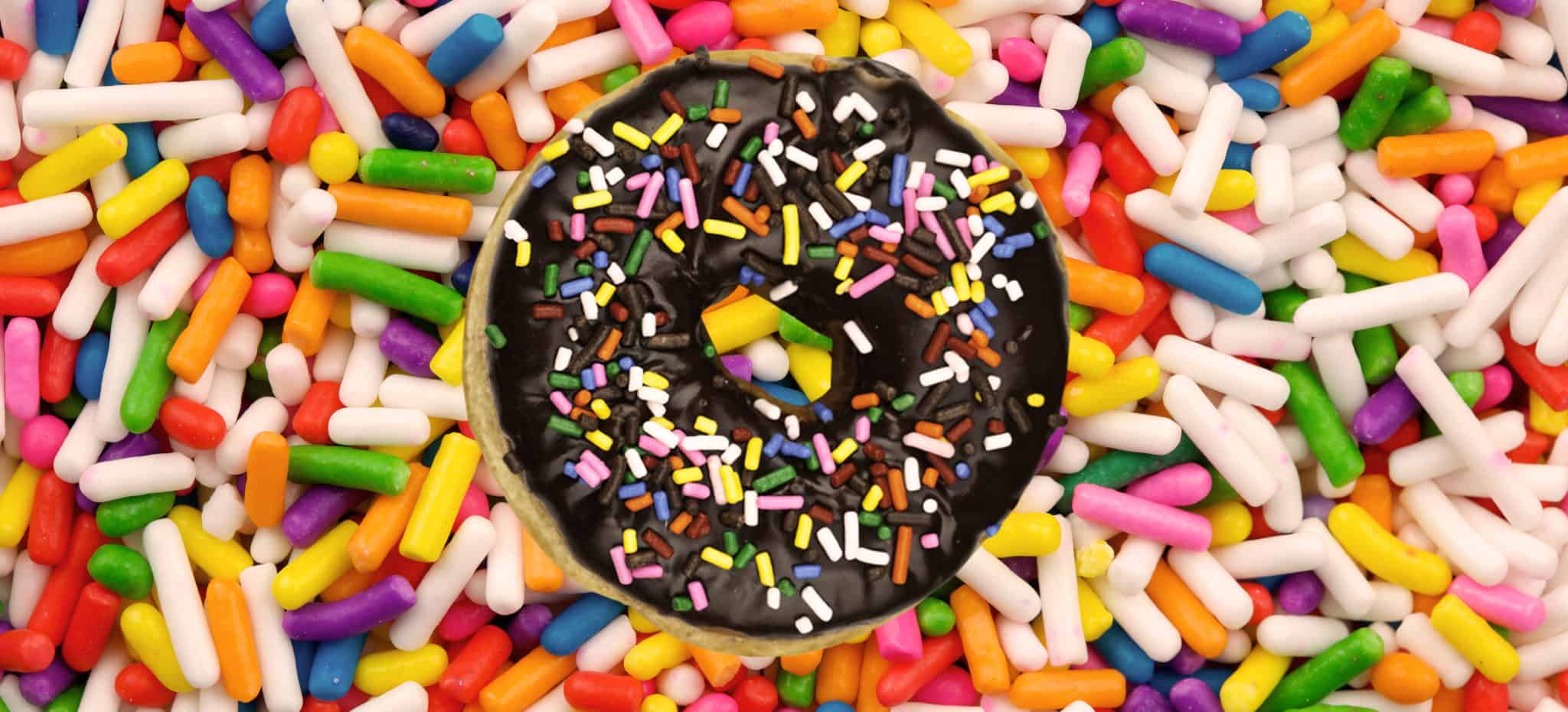Rainbow sprinkles make everyone’s day a little brighter. The sugary bits add crunch and color to cookies, cakes, ice cream, and pretty much everything and anything one decides to douse them on. We don’t know about you, but we’ve never given much thought to what sprinkles are actually made of. We just figured they’re pure sugar. But in actuality, there’s a lot of different ingredients packed into these little guys, and TBH, not all of them are good.
Discovery UK’s How It’s Made aired a segment on how rainbow sprinkles come to be. The process itself is pretty cool. However, the ingredients list makes us grimace. We probably won’t be eating sprinkles by the handful… anymore…
According to How It’s Made, sprinkles have been around since the late 18th century. French bakers would use them to liven up their treats. Chocolate sprinkles didn’t come about until the late 1930s, when a Dutch confectioner made the first batch after a young boy asked him to create a chocolate bread topping to add onto sweets.
[video_quote pvideo=”D6RwNuWj” video=”D6RwNuWj” text=””]
Chances are, the sprinkles from the days of yore didn’t include half the ingredients they do now. In our modern times, it takes these nine ingredients to make a single batch of sprinkles:
Nine ingredients to make a single colored sprinkle. Think of all the ingredients that go into making an entire variety bag.
Weekends call for all the sprinkles. pic.twitter.com/0TMoSGhkmi
— Pinkberry (@Pinkberry) January 11, 2019
What you’re seeing in those nine cups: a food coloring (in this case, these dyes are used to make pink/red sprinkles), powdered sugar, shortening (think Crisco), corn starch, palm oil, lecithin, dextrin, confectioner’s glaze, and carnauba wax.
If you have a trained eye for picking out questionable ingredients, then you may have noticed a few bad guys in that bunch. Firstly, we have to address the red food coloring.
Nuts.com, a sweet treat toppings retailer, lists Red 40 in the ingredients for their rainbow sprinkles. Red 40 is a manmade dye that was created to replace carmine, which was a dye made from crushed cochineal beetles. This new manmade red dye has a “presumably safe” level of benzidene, which is a human and animal carcinogen linked to cancer and hyperactivity in kids.

Of course, when we eat ice cream covered with sprinkles, we’re really not eating that much Red 40. But it’s still gross to know that we’re eating some.
Next on the naughty list is palm oil, which is blowing up in mainstream media lately.
Palm oil is found in copious amounts of foods, cosmetics, and household cleaners, and is totally safe for us to eat. However, the harvesting production of palm oil causes massive deforestation and damages biodiversity within rainforests.

So if you’re looking to do yourself and the Earth a favor, you might want to refrain from adding sprinkles to your ice cream cones from now on.
[fm_youtube url="https://www.youtube.com/watch?v=Hgh655UicIU"]Instead of sprinkles, opt for fruit.
Or nuts.
Or perhaps just forgo toppings altogether.
Sprinkles, we love you. We just didn’t realize you carried so much baggage.

